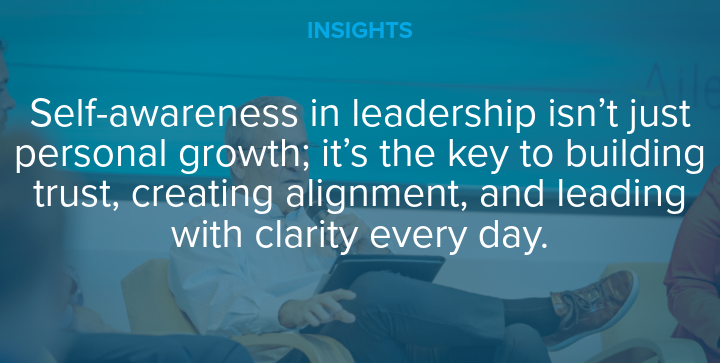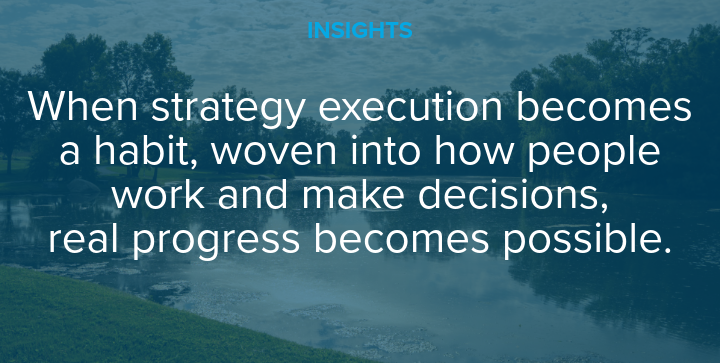
When the Team Stops Talking
For weeks, Daniel had felt like something was off.
The team was quieter in meetings. Ideas were surface-level. Deadlines were being met, but enthusiasm was missing. He chalked it up to the busy season, until a trusted colleague offered a gentle comment after a long week:
“You’re hard to read lately. It’s like we’re never sure what kind of mood you’re in.”
That stopped him. Daniel wasn’t trying to be unclear. He thought he was focused, pushing forward, staying productive. But in the process, he had become reactive. Detached. The very team he cared deeply about had begun pulling back. Not because they didn’t care, but because they didn’t know how to connect with him anymore.
That moment sparked a realization. Daniel didn’t need more planning. He needed more presence. He had to stop assuming he was showing up with clarity and start understanding how his leadership was actually being experienced.
That’s when the work of self-awareness in leadership began.
The Blind Spot Every Leader Has
Daniel’s story isn’t rare. Every leader, no matter how well-intentioned, has blind spots. They show up as habits we don’t question, emotional reactions we don’t recognize, or communication patterns that don’t land the way we think they do.
Daniel’s urgency felt like drive, but to the team, it came off as tension. His focus on outcomes made him less available for dialogue, unintentionally signaling that input wasn’t welcome. These were his leadership blind spots, and they were quietly shaping his culture.
This is where emotional intelligence plays a crucial role. It’s not about being softer; it’s about being more in tune. Leaders who develop self-awareness build trust faster, repair more easily, and create environments where others feel safe contributing honestly.
From Reacting to Responding
Before that feedback, Daniel reacted fast. He was always “on” and quick to solve, correct, and decide. But when he started observing his own behavior, something shifted. Instead of speaking first, he paused. Instead of jumping in, he asked clarifying questions.
That’s the move from reactive to responsive leadership. It’s not about slowing everything down. It’s about pausing long enough to act with intention, not impulse.
One day, a team member hesitated to raise a concern. Daniel caught himself mid-response and chose curiosity instead of control. “What would it look like to fix that?” he asked. That simple redirection unlocked a solution that would’ve been missed if he had rushed to answer.
Responsiveness allowed space for ideas and people to show up more fully.
How Small Shifts Lead to Big Changes
As Daniel practiced new habits like brief pauses, intentional questions, and quiet reflection, he noticed the team shifting too. Conversations became more open. Disagreements were easier to navigate. Ownership deepened.
He didn’t give a big speech or introduce a new framework. He just showed up differently. And people responded.
This is what mindful leadership looks like in practice: presence over performance. It’s recognizing that the energy leaders bring into a room is contagious—and that awareness can shift outcomes more than most tactics ever will.
Self-Awareness Is a Leadership Practice
Self-awareness isn’t about having all the answers. It’s about noticing the questions you haven’t been asking.
For Daniel, it became a daily rhythm. Sometimes that meant checking in with a teammate he had unintentionally rushed. Other times, it meant taking a quiet walk at the end of the day to mentally replay key conversations and decisions, looking for patterns, tone, or missed cues. Over time, these small, reflective moments created a deeper connection and stronger alignment within the team.
This kind of personal growth isn’t flashy. But it’s the foundation of a leadership style that lasts because it’s grounded in clarity, honesty, and a willingness to change.
Why This Work Really Matters
Daniel didn’t need a different title or a new system. He needed to reconnect with himself and with the people counting on him.
That’s what self-awareness in leadership does. It rebuilds the bridge between how you think you lead and how others actually experience it. And it gives your team something more powerful than instructions: it gives them stability, clarity, and trust.
So if your team seems off, or you feel stuck in a cycle of reaction, take a step inward.
Ask the hard questions. Listen without defensiveness. Notice your own patterns.
Because the more you see clearly, the more others will too. And that’s when leadership becomes something people don’t just follow—they’re inspired by it.
Strengthen your leadership by looking inward.
If you’re ready to lead with more intention and less reaction, the Becoming a More Conscious Leader program offers the tools and space to reflect, realign, and grow. Learn how greater self-awareness can improve your leadership presence and impact across your organization.
Not ready to commit just yet? Sign up for a complimentary Discovery call to connect and learn more.



